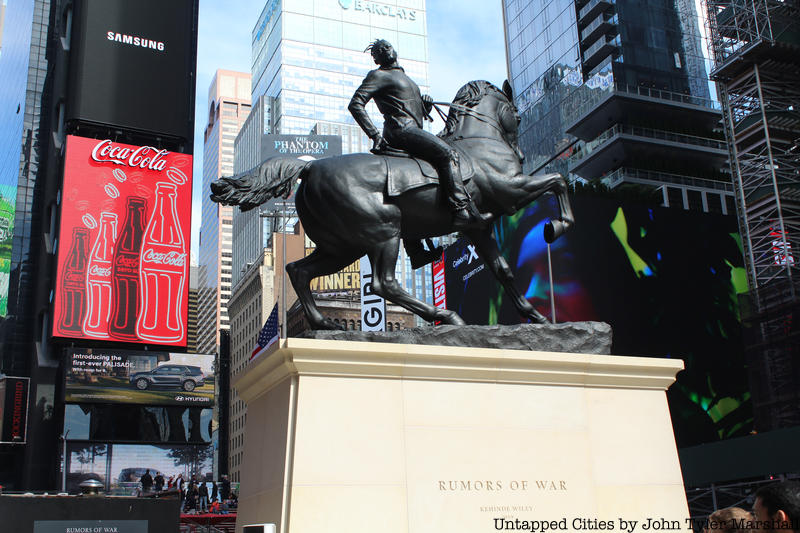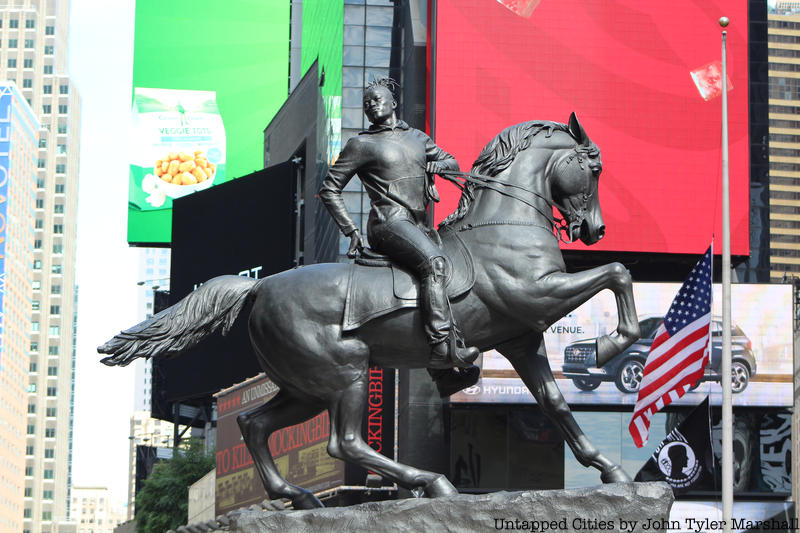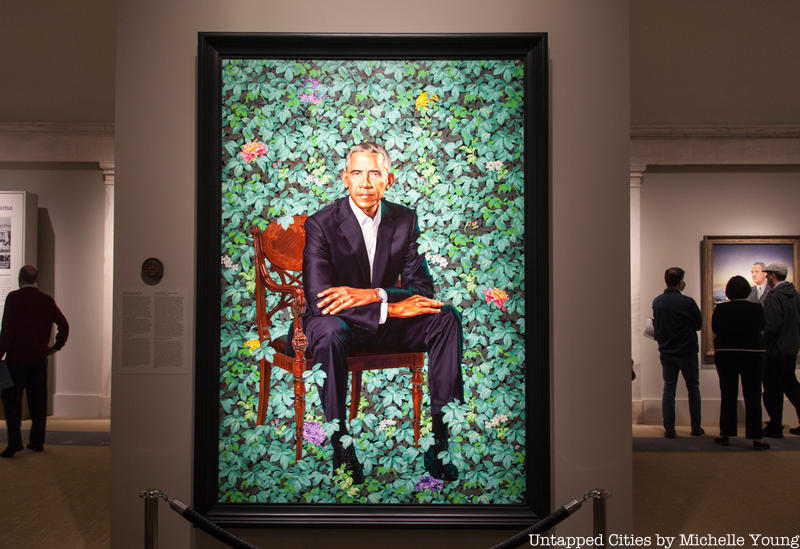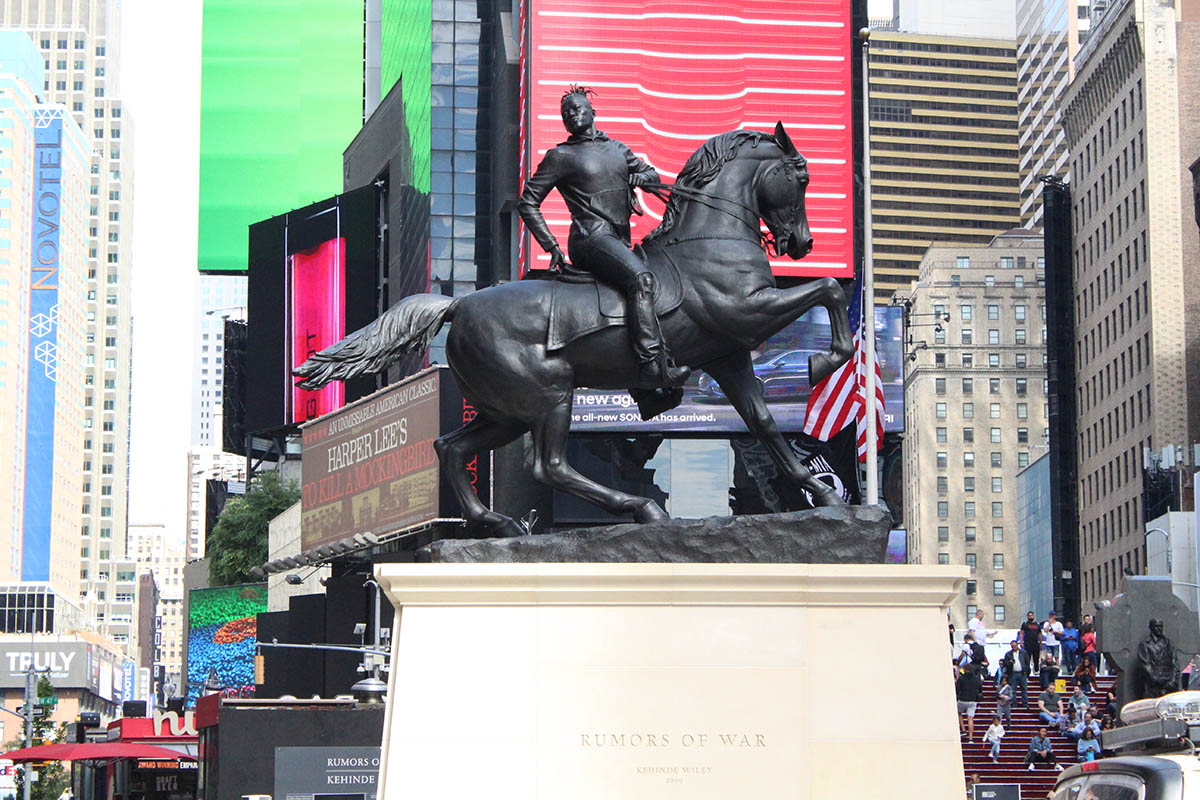Equestrian sculptures and paintings almost always feature a white man in a position of power and dominance. Women appear infrequently, Joan of Arc, for example, and a few women monarchs like Queen Elizabeth II. But an African American or Black person astride a horse? Now that is a rarity. A new monumental equestrian sculpture, Rumors of War, has just arrived to Times Square, by the artist Kehinde Wiley who painted Barack Obama’s portrait in the National Portrait Gallery in Washington D.C. The billboard for the play To Kill a Mockingbird fittingly just in the background.
Everything about this sculpture is meant to provocate, to question, to upend. The man who sits atop the horse is not only young, but wearing the garb of present day — a hoodie and jeans — and sporting dreadlocks. The horse, rearing its front leg, reminiscent of Jacques-Louis David’s Napoleon Crossing the Alps. Rumors of War is massive, at 27 feet tall and 16 feet wide, and Wiley’s largest work of his career so far. It sits here first in Times Square, at the center of mass consumption and visual stimuli, but will be headed to Richmond, Virginia, the heart of the Confederacy and its accompanying statues, to stand at the entrance of Virginia Museum of Fine Arts’ entrance on Arthur Ashe Boulevard.

At the opening event on Friday, Wiley stated that he was doing what “something that I never though in a million years that I’d be doing: which is to unveil a massive sculpture in the middle of Times Square, New York, America. Honestly, this makes me think more about where this story starts. The story starts with going to Virginia and seeing the monuments that line the streets. But it’s also about being in this Black body. I’m a Black man walking those streets. I’m looking up and seeing those things that give me a sense of dread and fear. What does that feel like physically to walk a public space and to have that [be] your state, your country, your nation, and say, this is what we stand by. No! We want more, we demand more. We creative people create more. And today, we say yes to something that looks like us. We say yes to inclusivity. We say yes to broader notions of what it means to be an American. We come from a beautiful, fractured, sometimes terrible past, but I think the job of artists is to be able to take all of those myriad pieces, to be able to imagine them coming back together, to be able to look yourself, whoever you, your Black body, you, your female body, you, your Trans body, whoever you happen to be, should be able to see yourself in this place we call America.”

As the press release states “Mounted proudly on its large stone pedestal, Wiley’s monumental bronze sculpture, Rumors of War, is the artist’s direct response to the ubiquitous Confederate sculptures that populate the United States, particularly in the South. Sitting astride a massive horse in a striking pose, Wiley’s young, African-American subject presents a powerful visual repositioning of young black men in our public consciousness while directly engaging the national conversation around monuments and their role in perpetuating incomplete narratives and contemporary inequities.”
 Kehinde Wiley’s portrait of Barack Obama in the National Portrait Gallery
Kehinde Wiley’s portrait of Barack Obama in the National Portrait Gallery
Rumors of War is a name derived from the New Testament of the Bible, referring to a period of change, Wiley said. “You have to recognize that the nature of human beings is to have this type of strife, to be in moments, politically, socially where we are right now, but there’s nothing new to that, and we’re stronger than that, and we rise beyond that, and there’s moments where art has to step in….This is my America too.”
Rumors of War will be on display in Times Square until December 1st.
Next, check out the Top 10 Secrets of Times Square.






